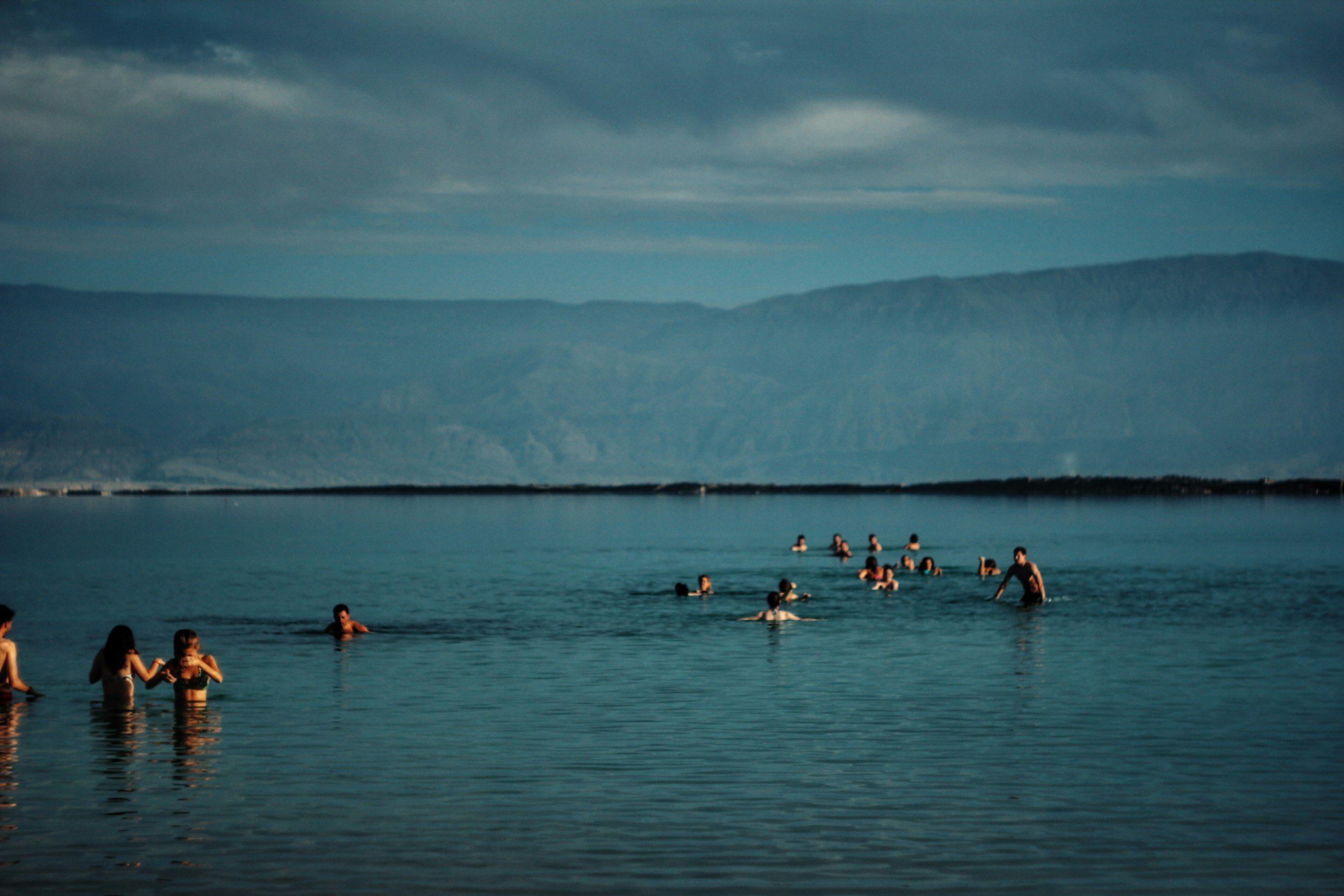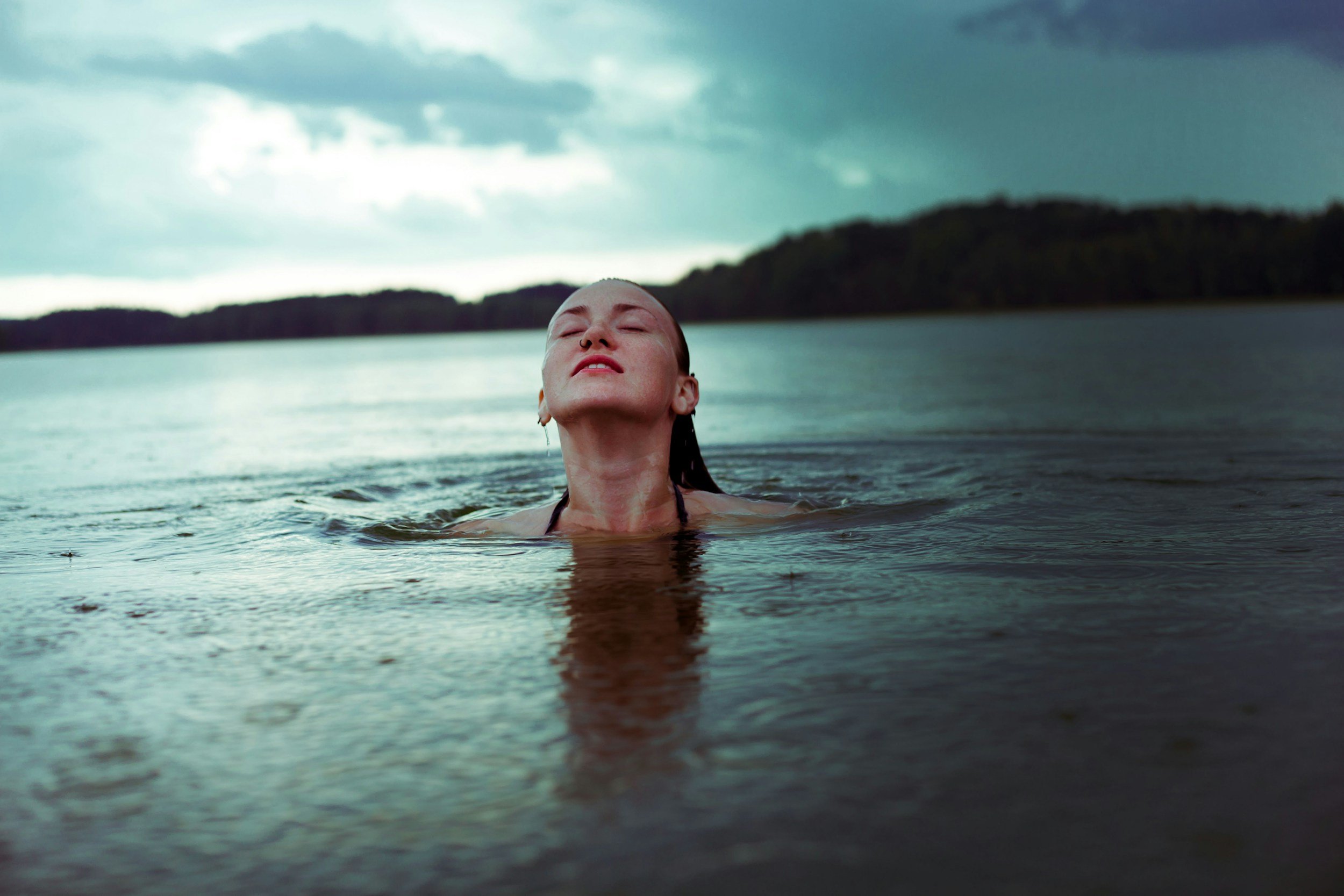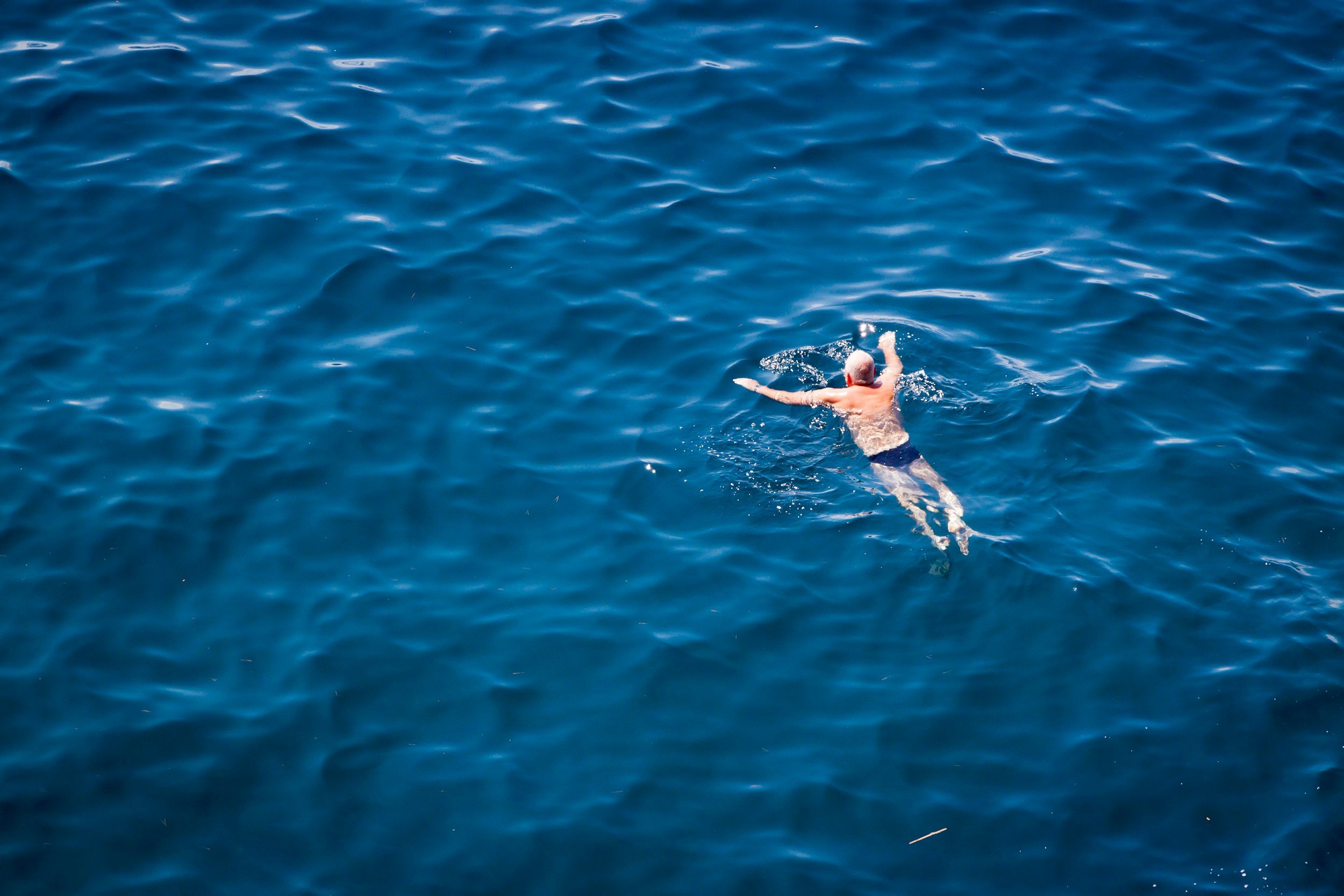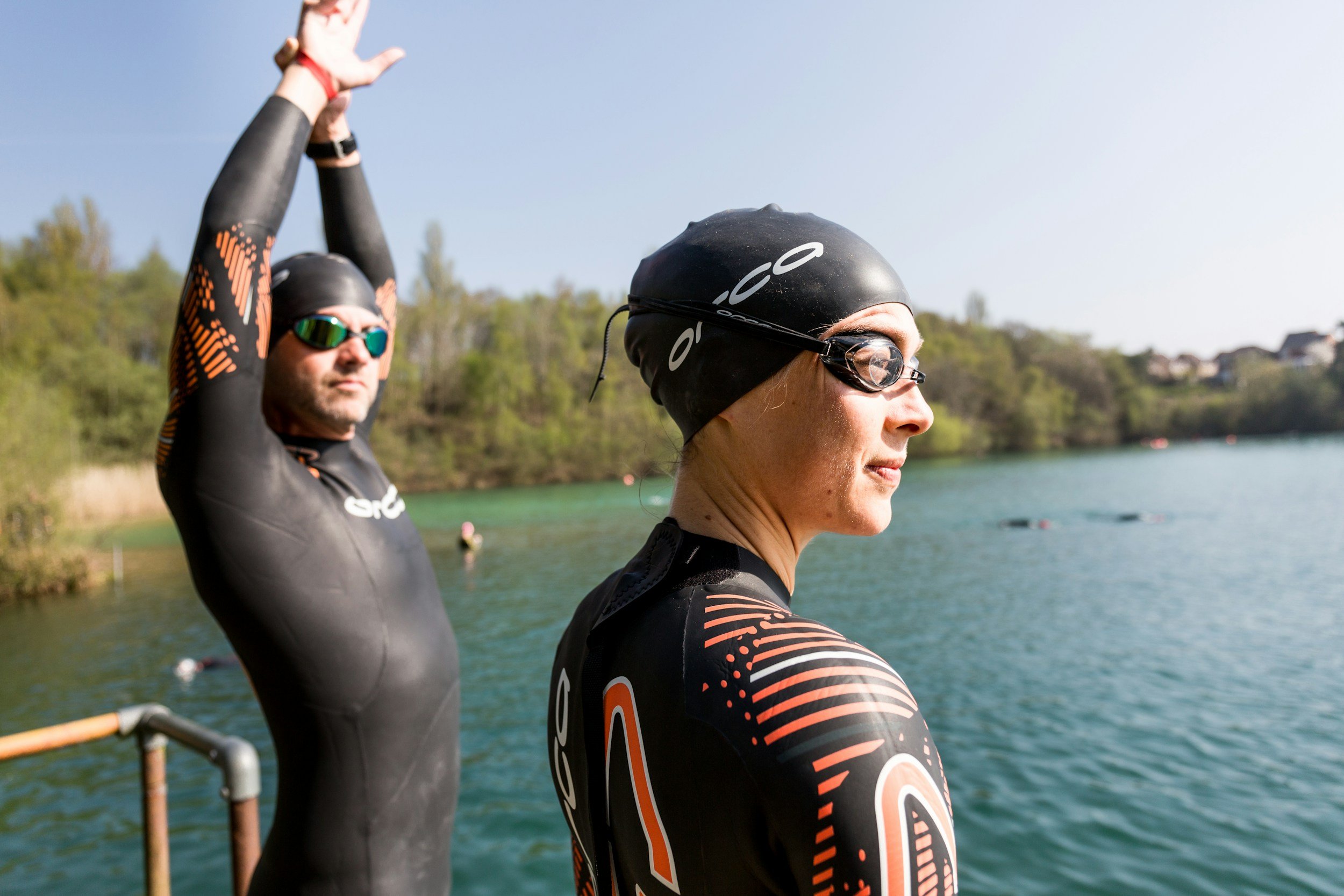
introduction to wild swimming
Wild Swimming, sometimes simply called “open water swimming,” formerly the province of middle aged ladies.
Not sure if that’s a particularly fair introduction but everyone has seen folks shopping in the local supermarket in their Dry Robe. Which, has probably and unfairly in our view, been met with some criticism from other outdoor action sports communities.
With the rise of awareness of the health benefits of cold water immersion (thank you Wim Hof) Wild Swimming has literally gone nuclear! On most well frequented shorelines you will see a group of hardy and brave souls getting their early morning swim in, regardless of the time of year and weather conditions.
So, what is it? Simply put, it’s swimming in natural bodies of water like rivers, lakes, and the sea. It offers a unique blend of adventure, connection to nature, and physical challenge. From a beginner’s perspective, wild swimming can feel more approachable because it requires minimal equipment, making it easy to get started. Here are the main components and features of Wild Swimming:
-
The water itself is the main element of wild swimming. Unlike controlled environments like swimming pools, natural bodies of water vary in temperature, clarity, and flow. Understanding the water’s behaviour and how to navigate it is crucial for a safe and enjoyable experience.
-
Wild Swimming can take place in a variety of locations—rivers, lakes, reservoirs, and the ocean. Each offers a different experience, from the stillness of a lake to the challenge of waves in the sea. It’s important to choose a location that matches your skill level.
-
While many swimmers enjoy the minimalist approach of wild swimming with just a swimsuit, others opt for additional safety gear. This can include a wetsuit for warmth, a swim buoy for visibility, and swim shoes to protect feet from rough or slippery surfaces.
-
Wild swimming is influenced heavily by environmental conditions like water temperature, currents, tides, and weather. Understanding these factors helps swimmers choose the right time and place for a swim and ensures a safer experience.
-
Wild Swimming includes various styles, such as leisurely swims, long-distance challenges, and cold-water plunges. Each style requires different levels of preparation and technique, depending on the swimmer's goals and the environment.
-
Safety is paramount in wild swimming. It’s important to assess risks, swim with others when possible, be aware of local wildlife, and have a plan for emergencies. Understanding your own limits and the environment is key to a safe swim. New initiates should also be aware of the potential risks of getting into cold water. This can be hazardous, so please read up on
techniques for cold water immersion (CWI) and how it should be approached without sending your body into shock.
The body's autonomic responses to CWI in extreme cased can include tachycardia, hyperventilation, and peripheral vasoconstriction. These responses can increase the risk of cardiac arrhythmias and drowning. With the proper approach all of these things can be mitigated, so go and have a proper introduction from a pro before getting stuck in.
-
Wild swimming offers numerous benefits, from a full-body workout to mental clarity. The cold water can boost circulation, while the experience of swimming in nature helps reduce stress and promotes a sense of well-being.
Download the buccaneer sessions app for free
|
The best wild swimming spots at your fingertips
|
Download the buccaneer sessions app for free | The best wild swimming spots at your fingertips |
Why is wild swimming is so awesome?
Wild swimming is considered an incredible experience for many reasons, combining physical exhilaration with a deep connection to the natural world. Here’s why it captivates so many enthusiasts:
Once you’ve felt the invigorating effects of cold, open water, it’s hard to resist returning for more
|
Once you’ve felt the invigorating effects of cold, open water, it’s hard to resist returning for more |
Why is wild swimming so addictive?
Wild swimming is addictive for several reasons. The rush of endorphins, the physical and mental benefits, and the sheer excitement of the experience all contribute to its allure. Once you’ve felt the invigorating effects of cold, open water, it’s hard to resist returning for more.
How hard is it to get into wild swimming?
Getting into wild swimming is accessible for most people, but there are a few things to consider:
-
Initial Learning: Getting comfortable with cold water and understanding natural water conditions can take some time. Gradually building up your tolerance and skills is key.
Physical Fitness: Wild swimming requires a moderate level of fitness, particularly in your core and legs, but it’s accessible to most people, regardless of age or athletic ability.
-
Self-Learning: While formal lessons aren't necessary, it’s important to educate yourself about the risks and techniques, especially when starting out.
Gradual Exposure: Beginners often start with shorter swims in mild conditions and gradually progress to longer distances and colder water.
-
Minimal Gear: All you need to start wild swimming is a swimsuit, but you may choose to use a wetsuit, goggles, and a swim buoy for safety and comfort.
Safety Gear: Consider using safety gear like a swim buoy or a wetsuit, especially in colder water or when swimming alone.
-
Wind and Water Conditions: Learning in moderate wind and flat-water conditions is ideal for beginners.
Location: Some places are better suited for beginners due to favourable wind patterns and accessible waters.
-
Regular Practice: Like any physical activity, regular practice helps improve your comfort level and skills in wild swimming.
Dealing with Challenges: Expect some challenges along the way, such as cold water shock or fatigue. Persistence and gradual acclimatization are key.
-
Wild Swimming Community: Joining a wild swimming group can provide valuable tips, safety advice, and companionship.
Mentorship: Swimming with more experienced wild swimmers can greatly enhance your learning experience and provide safety.
-
Low-Cost Entry: Wild swimming has a low cost of entry, with minimal gear required to get started.
Investing in Gear: As you get more into the sport, you may invest in additional gear like a wetsuit or specialized equipment for cold water swimming.
Is Wild Swimming Physically Hard?
Wild swimming can be physically demanding, but the difficulty level depends on factors like your fitness, experience, and conditions. Here’s a breakdown of the physical aspects involved:
Core Strength and Stability
Engages Core Muscles: Maintaining balance and control in the water requires strong core muscles, especially in open water with currents.
Improves Balance: The sport demands good balance, particularly when navigating waves or choppy water.
Upper Body and Arm Strength
Swimming Stroke: Your arms and shoulders are essential for propelling yourself through the water, especially in rough conditions.
Endurance: Swimming over long distances requires stamina and strong upper body endurance.
Leg and Lower Body Strength
Kick Efficiency: Your legs play a key role in swimming efficiently, helping you maintain speed and direction.
Cold Water Tolerance: Strong legs are essential for maintaining circulation and staying warm in colder water.
Cardiovascular Fitness
Endurance: Wild swimming is a full-body workout that can be quite aerobic, especially over long distances or in cold water.
Adaptation to Conditions: Adapting to changing water conditions, such as currents and waves, tests your cardiovascular endurance.
Flexibility and Coordination
Dynamic Movements: Swimming in open water involves dynamic movements, requiring flexibility and coordination to adjust to changing conditions.
Learning Curve: Beginners might find the sport challenging due to the need to quickly learn and integrate various swimming techniques.
Safety Considerations
Physical Endurance: Being physically fit enhances your ability to handle the cold and exertion, making the sport safer and more enjoyable.
Recovery: Cold water and physical exertion can lead to muscle soreness, so good conditioning helps with recovery and reduces the risk of injury.




Looking for some places to swim?
wild swimming: DISCOVER the great new spots to explore
There are over 500 wild swimming spots in the Buccaneer Sessions app.
Download today for FREE!



